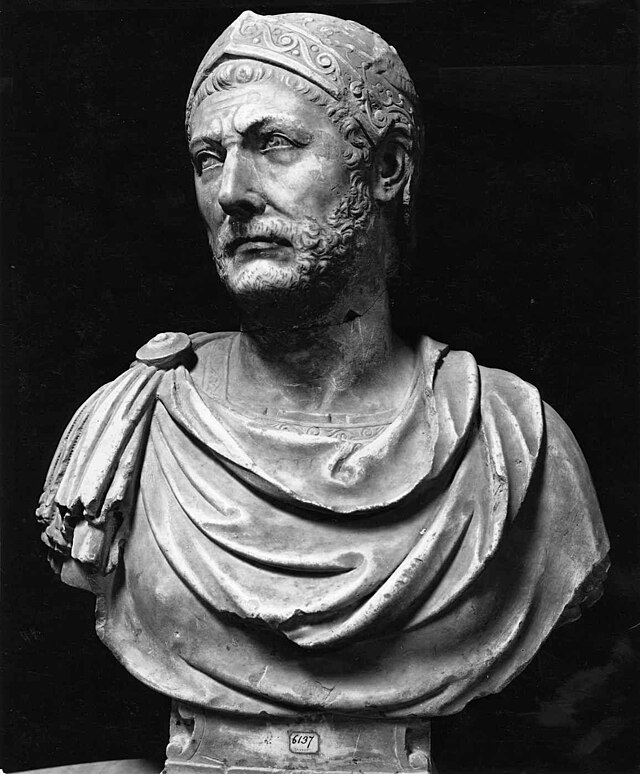Content deleted Content added
Tag: Reverted |
m |
||
Line 1: {{short description|Carthaginian general and statesman (247–183/181 BC)}} {{pp-move|small=yes}} {{for multi|the fictional horror character|Hannibal Lecter|other uses|Hannibal (disambiguation)}} {{Use dmy dates|date=June 2024}} {{Infobox military person Line 103: By Livy's account, the crossing was accomplished in the face of huge difficulties.<ref>Livy ''History of Rome'' book 21, 36</ref> These Hannibal surmounted with ingenuity, such as when he used [[fire-setting|vinegar and fire]] to break through a rockfall.<ref>Livy History of Rome, Book 21 sections 32–36</ref> According to Polybius, he arrived in Italy accompanied by 20,000 foot soldiers, 4,000 horsemen, and only a few elephants. The fired rockfall event is mentioned only by Livy; Polybius is mute on the subject and there is no evidence<ref>Mahaney, W.C., et al., 2009. "The Traversette rockfall: geomorphological reconstruction and importance in interpreting classical history." ''Archaeometry'', v. 52, no. 1, pp. 156–172.</ref> of carbonized rock at the only two-tier rockfall in the Western Alps, located below the [[Col de la Traversette]] (Mahaney, 2008). If Polybius is correct in his figure for the number of troops that he commanded after the crossing of the Rhône, this would suggest that he had lost almost half of his force. Historians such as Serge Lancel have questioned the reliability of the figures for the number of troops that he had when he left Hispania.<ref>S. Lancel, ''Hannibal'' (1995; English translation 1999), p. 60.</ref> From the start, he seems to have calculated that he would have to operate without aid from Hispania. Hannibal's vision of military affairs was derived partly from the teaching of his Greek tutors and partly from experience gained alongside his father, and it stretched over most of the Hellenistic World of his time. The breadth of his vision gave rise to his grand strategy of conquering Rome by opening a northern front and subduing allied city-states on the peninsula, rather than by attacking Rome directly. Historical events that led to the defeat of Carthage during the First Punic War when his father commanded the Carthaginian Army also led Hannibal to plan the invasion of Italy by land across the Alps. The task involved the mobilization of between 60,000 and 100,000 troops and the training of a war-elephant corps, all of which had to be provisioned along the way. The alpine invasion of Italy was a military operation that would shake the Mediterranean World of 218 BC with repercussions for more than two decades. ===Battle of Trebia=== | |||
 Article Images
Article Images